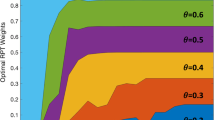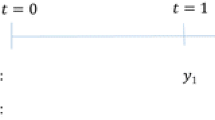Abstract
Studying the interactions between preference and capacity manipulation in matching markets, we prove that acyclicity is a necessary and sufficient condition that guarantees the stability of a Nash equilibrium and the strategy-proofness of truthful capacity revelation under the hospital-optimal and intern-optimal stable rules. We then introduce generalized games of manipulation in which hospitals move first and state their capacities, and interns are subsequently assigned to hospitals using a sequential mechanism. In this setting, we first consider stable revelation mechanisms and introduce conditions guaranteeing the stability of the outcome. Next, we prove that every stable non-revelation mechanism leads to unstable allocations, unless restrictions on the preferences of the agents are introduced.
Similar content being viewed by others
References
Abdulkadiroğlu A, Pathak PA, Roth AE (2005) The New York City high school match. Am Econ Rev 95: 364–367
Alcalde J, Romero-Medina A (2000) Simple mechanisms to implement the core of college admissions problems. Games Econ Behav 31(2): 294–302
Dubins LE, Freedman DA (1981) Machiavelli and the Gale-Shapley algorithm. Am Math Mon 88: 485–494
Ehlers L (2010) Manipulation via capacities revisited. Games Econ Behav 69: 302–311
Ergin H (2002) Efficient resource allocation on the basis of priorities. Econometrica 70: 2489–2497
Gale D, Shapley LS (1962) College admissions and the stability of marriage. Am Math Mon 69: 9–15
Gale D, Sotomayor M (1985a) Some remarks on the stable marriage problem. Discrete Appl Math 11: 223–232
Gale D, Sotomayor M (1985b) Ms Machiavelli and the stable matching problem. Am Math Mon 92: 261–268
Hurwicz L, Maskin E, Postlewaite A (1995) Feasible Nash implementation of social choice rules when the designer does not know endowments or production sets. In: Ledyard JO The economics of informational decentralization: complexity, efficiency and stability. Kluwer Academic Publishers, Amsterdam
Kara T, Sönmez T (1997) Implementation of college admission rules. Econ Theory 9: 197–218
Kesten O (2012) On two kinds of manipulation for school choice problems. Econ Theory. doi:10.1007/s00199-011-0618-6
Kojima F (2007) When can manipulations be avoided in two-sided matching markets?—maximal domain results. B.E. J Theor Econ 7(1) (Contributions), Article 32
Kojima F, Pathak PA (2008) Incentives and stability in large two sided matching markets. Am Econ Rev 99(3): 608–627
Konishi H, MU (2006) Games of capacity manipulation in hospital-intern markets. Soc Choice Welf 27: 3–24
Mumcu A, Saglam I (2009) Games of capacity allocation in many-to-one matching with an aftermarket. Soc Choice Welf 33: 383–403
Pathak PA, Sönmez T (2009) Comparing mechanisms by their vulnerability to manipulation. WP, MIT and Boston College, Cambridge
Romero-Medina A, Triossi M (2010) Non-revelation mechanisms in many-to-one markets. Available at SSRN: http://ssrn.com/abstract=1675222
Romero-Medina A, Triossi M (2012) Acyclicity and singleton cores in matching markets. Econ Lott (forthcoming)
Roth AE (2002) The economist as engineer: game theory, experimentation as tools for design economics. Econometrica 70: 1341–1378
Roth AE, Peranson E (1999) The redesign of the matching market for American physicians: some engineering aspects of economic design. Am Econ Rev 89: 748–780
Roth AE, Sotomayor M (1990) Two-sided matching: a study in game theoretic modeling and analysis. Cambridge University Press, Cambridge
Sönmez T (1997) Manipulation via capacities in two-sided matching markets. J Econ Theory 77: 197–204
Sotomayor M (2003) Reaching the core of the marriage market through a non-revelation matching mechanism. Int J Game Theory 32: 241–251
Sotomayor M (2008) The stability of the equilibrium outcomes in the admission games induced by stable matching rules. Int J Game Theory 36: 621–640
Author information
Authors and Affiliations
Corresponding author
Rights and permissions
About this article
Cite this article
Romero-Medina, A., Triossi, M. Games with capacity manipulation: incentives and Nash equilibria. Soc Choice Welf 41, 701–720 (2013). https://doi.org/10.1007/s00355-012-0703-1
Received:
Accepted:
Published:
Issue Date:
DOI: https://doi.org/10.1007/s00355-012-0703-1




